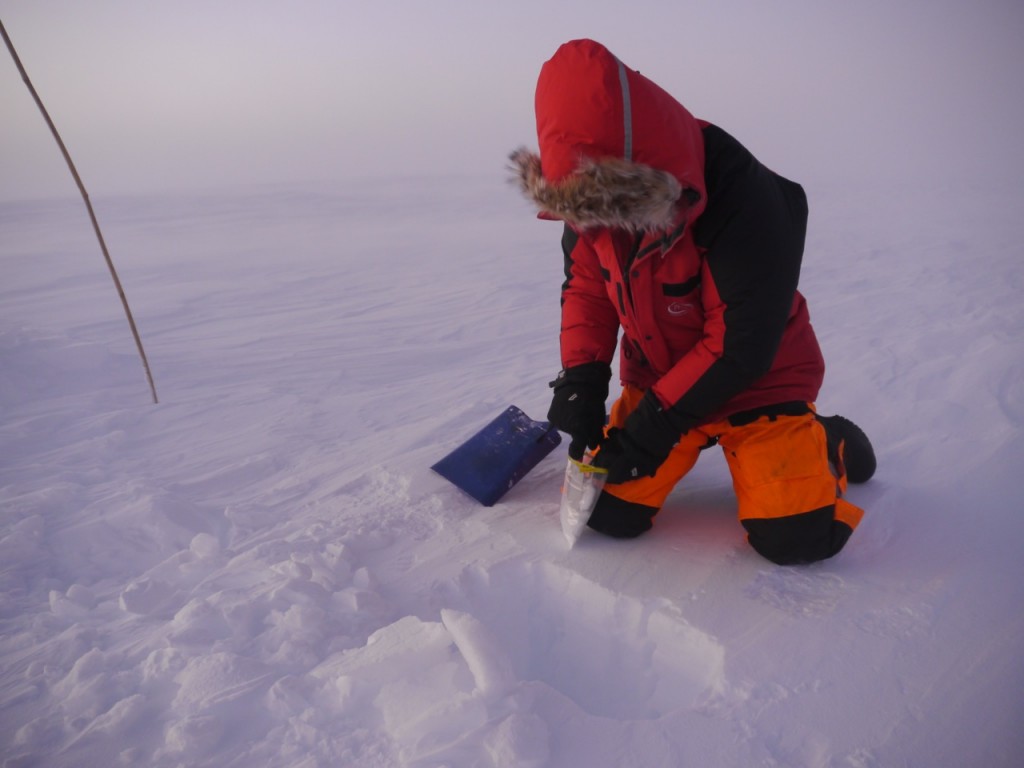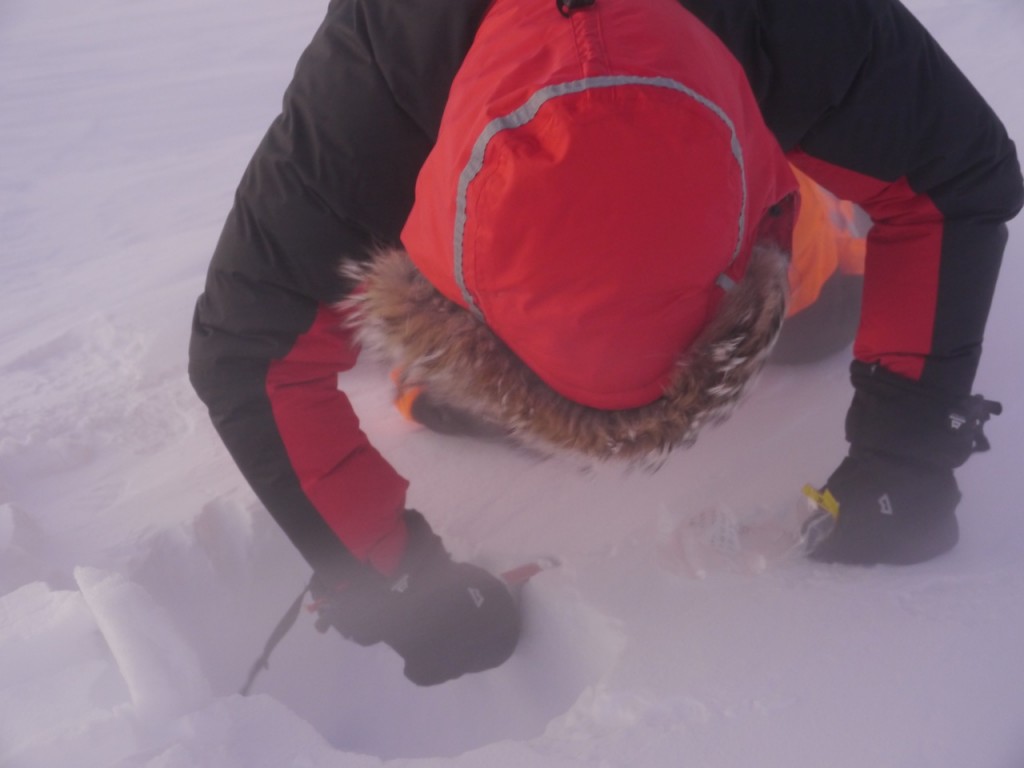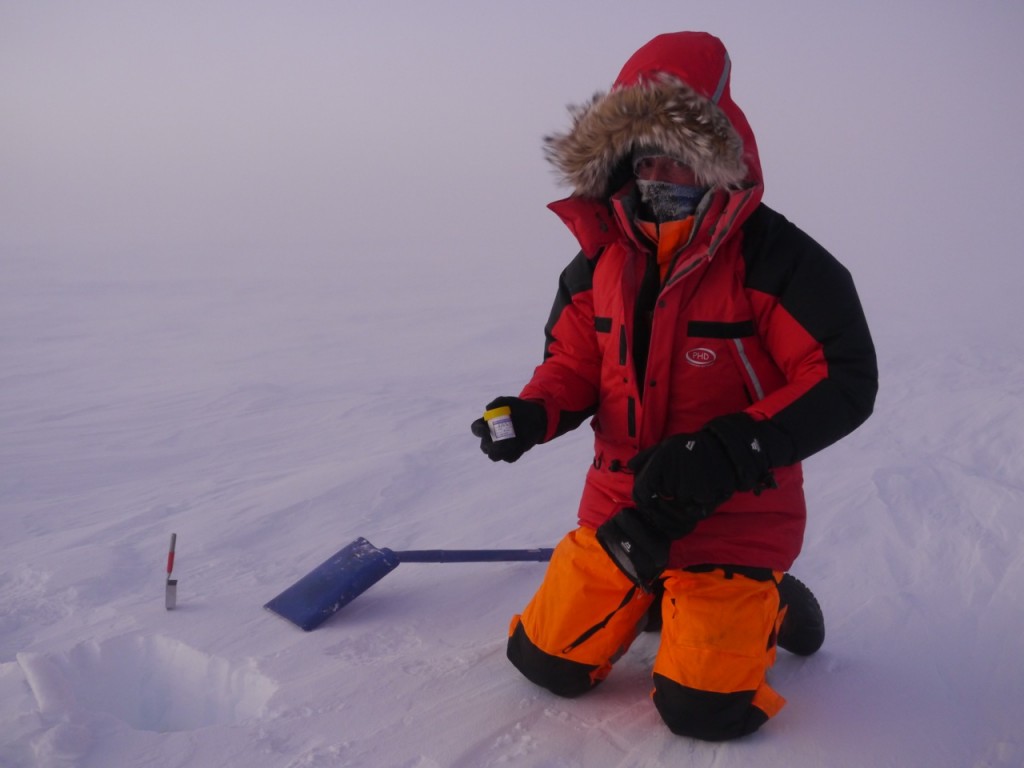Snow Sampling by Brian Newham
 Today was snow sampling day and it is something that we do at least every three days, more regularly if there is local snowfall, as part of our science programme.
Today was snow sampling day and it is something that we do at least every three days, more regularly if there is local snowfall, as part of our science programme.
We are collecting snow samples for two separate research projects. One is looking at Moisture Transport by Water Isotope Analyses ( for NASA Goddard Space Flight Centre, USA and also Chinese Academy of Meteorological Sciences, China ) and the other is looking at Psychrophilic Bacteria profiling ( for Malaysian Antarctic Research Programme). More details of these projects can be found on our science pages https://www.thecoldestjourney.org/science/
Upwind of camp we have a designated sample area which is marked by flags and we only enter this area to take samples. For the first sample we dig a pit in the snow down to about 400mm; at that depth the snow is sufficiently hard that the shovel will not penetrate any deeper so that’s as far as we can go. Using a stainless steel scoop we then take samples of snow from the wall of the pit which start at the surface and then work down through the snow-pack to the bottom of the pit. These samples then go into sterile plastic bags which are labeled with location, date, time and temperature. The second set of samples are taken from the snow surface and go into sterile screw-top containers and we take three of them each time to allow for repeatability checks.
 It’s a fairly straightforward process although the weather conditions can make it a bit more challenging; firstly, just in getting to the sample area and secondly because it requires thin gloves to maintain the dexterity necessary to collect the samples and handle the bags and bottles. Today the windchill was down to -75C and it proved to be a painful process, on other occasions it’s not so nice.
It’s a fairly straightforward process although the weather conditions can make it a bit more challenging; firstly, just in getting to the sample area and secondly because it requires thin gloves to maintain the dexterity necessary to collect the samples and handle the bags and bottles. Today the windchill was down to -75C and it proved to be a painful process, on other occasions it’s not so nice.
Once the samples are collected and documented they get stored in an aluminium Zarges box and are kept frozen, which is quite easy to do at the moment but as the summer arrives and we make our way back to the coast that will become increasingly difficult and it’s inevitable that we will resort to burying them whenever we are static. No problem as digging is well known to anyone who has lived and worked in the polar regions.
Eventually the samples will find their way back to the various institutes for analysis.
Comments are closed

There are 2 comments